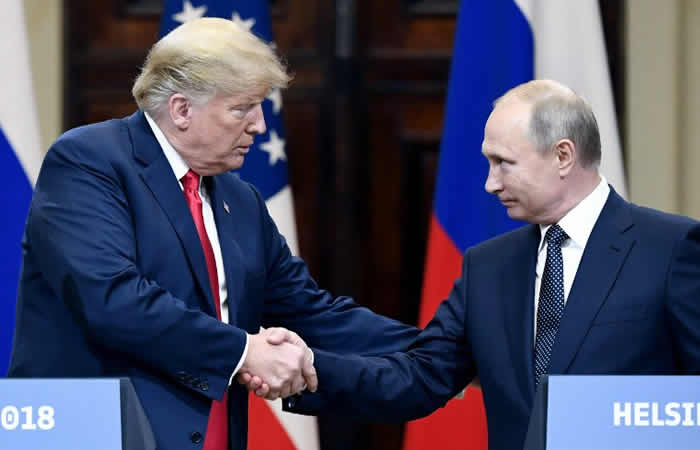The announcement of an impending summit between US President Donald Trump and Russian President Vladimir Putin has sent ripples through the international community, sparking speculation about the potential trajectory of the ongoing war in Ukraine. The summit, scheduled for August 15, 2025, in Alaska, marks the first face-to-face meeting between sitting US and Russian presidents since June 2021 and comes amidst a backdrop of intense global pressure to find a resolution to the devastating conflict. President Trump hinted at the possibility of territorial concessions as part of a peace deal, a proposition that has raised both hopes and concerns. The Kremlin confirmed the summit, deeming the location “quite logical,” and emphasized the presidents’ focus on exploring pathways toward a lasting peaceful settlement in Ukraine. The backdrop against which this summit unfolds is one of immense human suffering and geopolitical tension. The conflict, initiated by Russia’s full-scale invasion in February 2022, has claimed tens of thousands of lives and displaced millions, creating a humanitarian crisis of staggering proportions.
The summit’s announcement followed consultations President Putin held with the leaders of China and India, two nations that have maintained complex relationships with both Russia and the West throughout the conflict. These discussions likely centered on the evolving geopolitical landscape and potential strategies for mediating the Ukrainian crisis. President Trump, in his first months back in office, has prioritized brokering peace in Ukraine, but tangible progress has remained elusive. His suggestion of “swapping territories” as a component of a potential agreement has introduced a contentious element, raising questions about the long-term implications for regional stability and the sovereignty of Ukraine. The details of any such territorial exchange remain unclear, adding to the uncertainty surrounding the summit’s potential outcomes.
Prior attempts at negotiations between Russia and Ukraine have yielded no breakthroughs, leaving the efficacy of the upcoming summit in doubt. Three rounds of talks have failed to bridge the divide, with Russia’s persistent bombardments and Ukraine’s unwavering resistance continuing to fuel the conflict. The humanitarian cost of the war has been catastrophic, with millions forced from their homes and vast swathes of eastern and southern Ukraine reduced to rubble. President Putin has repeatedly rebuffed calls for a ceasefire and refused to engage in direct talks with Ukrainian President Volodymyr Zelensky, whom he considers a prerequisite for any substantive progress. The entrenched positions of both sides pose a formidable challenge to any effort at mediation, highlighting the deep-seated mistrust and conflicting objectives that have characterized the conflict from its inception.
Past negotiations have revealed significant discrepancies in the parties’ demands, further complicating the path to resolution. During talks in Istanbul, Russian negotiators presented stringent territorial demands as a condition for halting their advance, including Kyiv’s withdrawal from certain controlled areas and the renunciation of Western military support. These demands, deemed unacceptable by Ukraine and its Western allies, reflect the fundamental disagreement over territorial integrity and the future security architecture of the region. The unresolved status of Crimea, annexed by Russia in 2014, adds another layer of complexity to the negotiations, underscoring the historical grievances and competing claims that fuel the conflict. The backdrop of these past failures underscores the immense challenge facing Trump and Putin as they prepare to meet.
The summit’s significance extends beyond the immediate context of the war in Ukraine, representing a broader attempt to reset US-Russia relations after a period of heightened tension. The last meeting between Trump and Putin took place in 2019 at the G20 summit in Japan, during Trump’s first presidency, and subsequent communication has been limited to telephone calls. The Kremlin’s disclosure of a prior invitation extended to President Trump to visit Russia suggests a desire on Moscow’s part to foster closer diplomatic ties, potentially leveraging the summit as an opportunity to improve relations and reduce the strain imposed by sanctions and international condemnation. The dynamics of this high-stakes encounter will be closely scrutinized by the global community, with the potential for either a significant step towards peace or a further escalation of tensions.
The involvement of other global powers adds further intricacy to the situation. China’s President Xi Jinping, during a phone call with Putin, expressed support for a “long-term” solution to the conflict, emphasizing China’s interest in a peaceful resolution while reaffirming the strong bilateral ties between Moscow and Beijing. India’s Prime Minister Narendra Modi also engaged in a phone conversation with Putin, following joint condemnation of new US tariffs related to India’s oil purchases from Russia. Both Xi and Modi have presented their own peace initiatives for Ukraine, although these have yet to gain significant traction. The involvement of these major players highlights the global ramifications of the conflict and the importance of multilateral efforts to achieve a lasting peace. President Putin’s assertion of willingness to meet with President Zelensky, but only during a “final phase” of negotiations, further underscores the complex interplay of domestic and international pressures shaping the course of the conflict. The evacuation of families with children from villages near the front line in Donetsk serves as a stark reminder of the ongoing human cost of this conflict, even as diplomatic efforts intensify.


